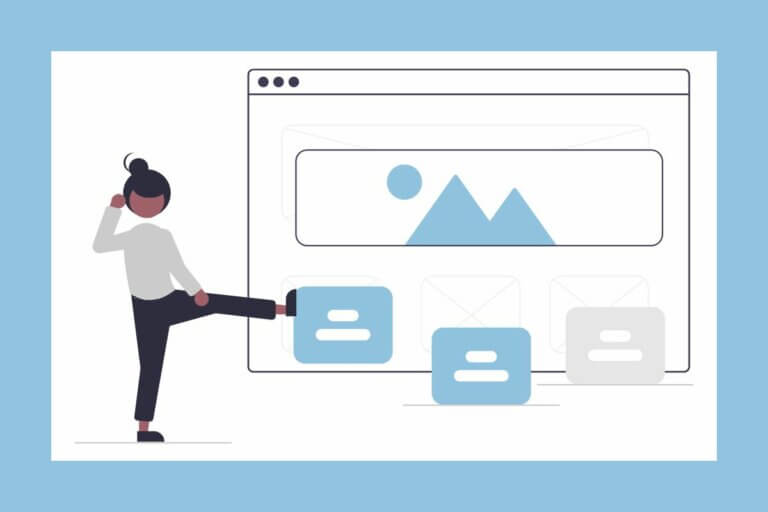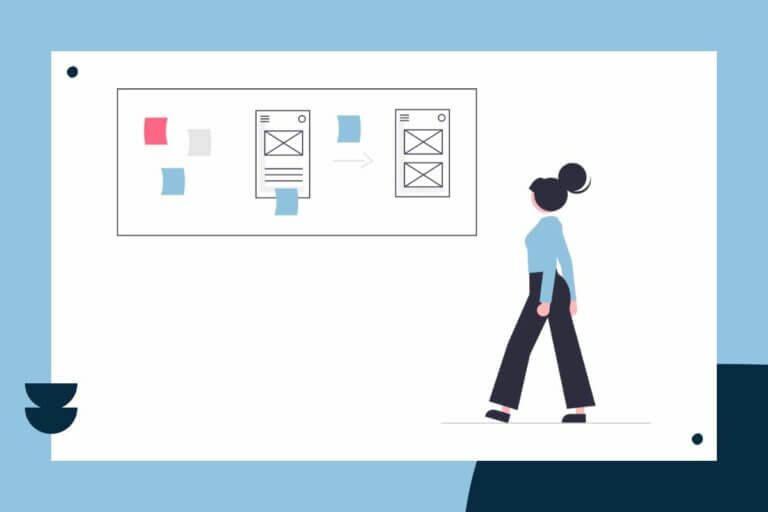Create Impact with a Client Persona
I know … it’s very tempting to just sit down and start to write content. I’ve been there. An idea is bubbling in my head, waiting to appear on screen. And I just want to write.
But, if I want my words to resonate, I need to do some homework first. And, so do you.
What do we need to do? Stop and think about who we are trying to reach with that content so we can write our content for that person. This process all begins with a client persona.
What is an ideal client persona, and why does it matter?
Simply, an ideal client persona is a thorough description of your dream client. It’s how you’d describe the person or persons you’d most like to work with. It’s the person your business is designed to help.
Client personas help you connect with your clients because they help you understand them and their problems.
Pick a Niche
The first step to creating your client persona is to identify the niche or market you serve.
A lot of us think it’s best to focus on everyone who needs our service or product. It just seems intuitive that the more types of people we can serve, the easier it will be to get clients. But in fact, the opposite is true. The more you can narrow down and specifically define your ideal client, the easier it is to market to them.
For example, let’s say I’m a dog sitter. If I focus on everyone who has dogs – that’s a really broad description. Because that’s so broad, it’s hard for me to actually target my client with my content marketing. There are many types of dogs, and so many reasons why people have dogs or need a dog sitter. It’s hard to target all those people at once.
But instead, let’s say I want to be a dog sitter for service dogs. Now, I know exactly who my market is, and this helps me a lot. For example, I can design my website so that it works well with screen readers, because some of my clients might be blind. I can share how I know about the special needs of service dogs. I can be the expert in this area!
Or, maybe I just want to walk dogs during the day. Once I know this, I can craft my marketing to target busy professionals who have to leave their dogs home during the day. I can also design my website so that it appeals to busy professionals.
Of course, you want to pick a niche or specialization of a group of people who need and can afford your products or services.

Who is Your Client?
Now, it’s time to describe the characteristics of your ideal client in the niche you chose. Ideally, you get as specific as possible. The more you can define these things in detail, the easier it will be to grab your audience’s attention.
Remember, you don’t need to attract everyone, just the right clients for you. Below is a list of ideas to get you started:
- Role. What role does this person play in his/her business and life? Is he/she a buyer, client, reader, colleague? Also, what role does this person play in his or her own life? Is he/she a business owner, employee, stay-at-home mom? You get the idea.
- Name. Give this person a name, so you can get more specific about who that person is.
- Background. Similarly, identify the person’s background, such as age, gender, education level, etc., to start building a good picture of the person.
- Profile. Have fun with this one! What does your persona like or dislike? How does this person have fun, or what kind of sense of humor does he or she have?
- Scenario. Think about how this person finds you and your business. Is it from an on-line search, a networking event, referral, or a chance meeting?
- Goals. What does this person want? What help is this person seeking? Knowing this is absolutely crucial to understanding your client persona.
- Challenges. Likewise, what challenges does this person face?
- Can you help? This might seem obvious, but make sure you can help your persona reach his or her goals or tackle the challenges.
Take out a notepad or open your favorite note taking app. Spend some time just brain storming ideas. Once you’ve got all your ideas down on paper, try to narrow down the ideas until you have the description of your dream client. Of course, it’s possible you’ll have more than one ideal client!
Now, just write up a simple bullet list of the characteristics of your ideal client(s). Keep this list handy while you’re working on your website and writing projects. You want your website, content and marketing to appeal to this person.
Know The Problems You Solve
Now, I’d like you to think about what problems you solve for your ideal clients or customers.
Why is this important?
Well, think about why you head over to Google to search the Internet or look for a professional to help you. More than likely, you’ve got a problem you want to solve!
Which websites do you end up reading and staying on? Probably the websites that speak directly to your problem and offer services or products that solve your problem. Am I right?
If you want your ideal client to read your website, your website needs to offer that same experience to them. The only way you can do that is if you really understand what problems they face and need help solving.
So how do you figure that out? It’s not that hard, really.
Step One
Look for the obvious. Put yourself in your client’s shoes and think about what problems you might have. For example, if you are a dog sitter, your client is a dog owner. Pretend you’re the dog owner and think about the problems you might have.
One of the obvious problems your client the dog owner has is how to let your dog out during the day. The dog owner worries about the dog while at work. So, the problem you the dog sitter solves is making sure the dog can get out during the day while the client is at work.
Get our your notepad again and begin brainstorming about the problems your ideal client has. Add these problems to your list you created earlier.
Step Two
Do some research. Think about some obvious places online where your clients hangout, like Facebook Groups, Twitter, or forums. Start paying attention to the questions people ask there. Those questions are great insights to the problems your clients have.
You can also be more direct in your research. You could send out a survey to your contacts, or post a poll on Facebook.
Do some basic keyword research at Ubersuggest. Type in a question or a phrase relating to your business. The Key Word Ideas and SERP Results will shed light on the problems your clients face.
If you’ve been in business for awhile, research your past! Simply think about your past clients and the particular problems you have solved for them. Look for the patterns and commonalities in your past clients.
Finally, use Google. Pretend you’re your client, and type in a search. Look at the suggestions Google makes below the address bar as you’re typing your search. See what search results pop up first in the results list. These are also good clues about the problems your clients have.
Add any new problems you identified to your list you’ve been working on.
Step Three
Now, I want you to go through your list of problems and identify which of these problems you solve with your products and services. Think about how you’d describe each solution to these problems to a potential client. Describe the solution from your client’s point of view. Focus on the solution, not the process.
Add this description under the problem on your list you created earlier.
Congratulations! You have just outlined some content you can use your on your website that shows you understand and can solve your ideal client’s problems.

Results Matter
Now, it’s time to think about the results your client gets after you solve their problem(s).
What do I mean by results? For example, if you were a dog sitter, the result is that your client doesn’t have to worry about their dog during the day and knows their dog is happy and well cared for. Ultimately, your client gets peace of mind!
For each of the problems you solve, try to identify the benefits and results your clients get. Think about the emotions involved and what the ultimate resolution is. You can get clues about the results and benefits from the same places you researched the problems. Just start paying attention, and I think you’ll be amazed at how much you can learn!
Finally, add the benefits and results to the list you’ve been working on.
Getting the Right Fit Pays Off
After going through this entire process, and creating a few ideal client personas, take a break. Then, go back and honestly look them over. Can you imagine working or connecting with each of them and what would that be like? Eliminate any of them that just don’t fit or feel right.
Now, all this may feel like a lot of work. But, it will pay off. Next time you sit down for a writing project for your website, take a look at that bullet list you just created. Start your writing project as if you were talking to that person and solving one of his or her problems.
This works. I’ll share from personal experience. When I go through this process, I actually have an easier time writing when I do sit down. Thinking about who I am writing for, and getting excited about helping and connecting with that person, helps me focus and stay on track. That spirit shines through and resonates with my target audience.


